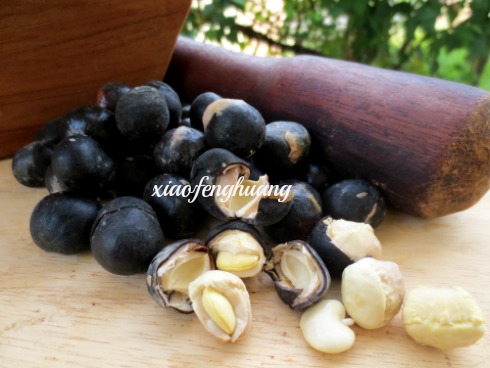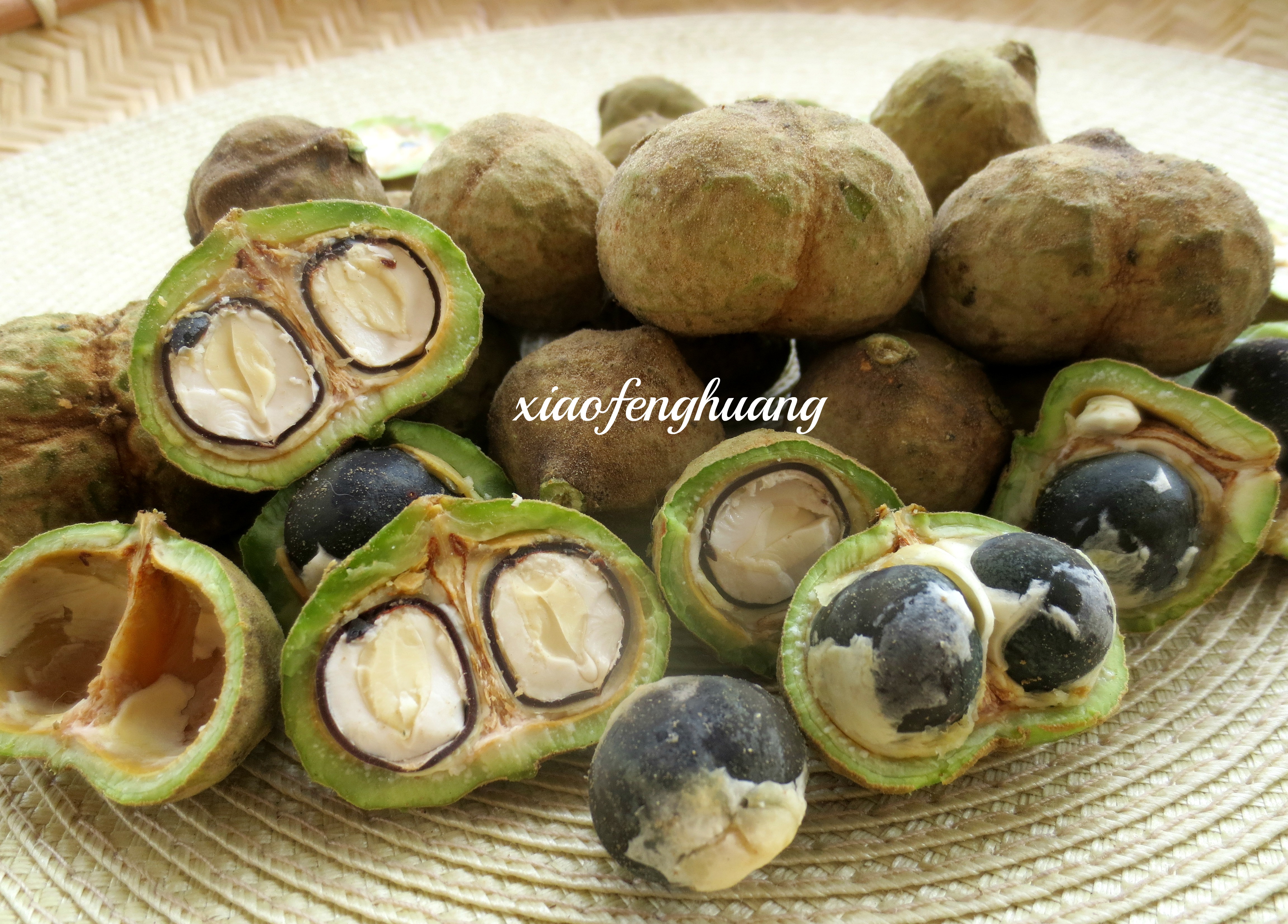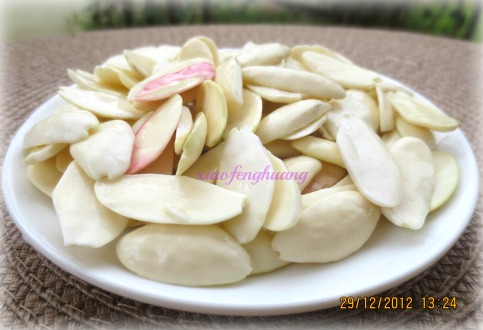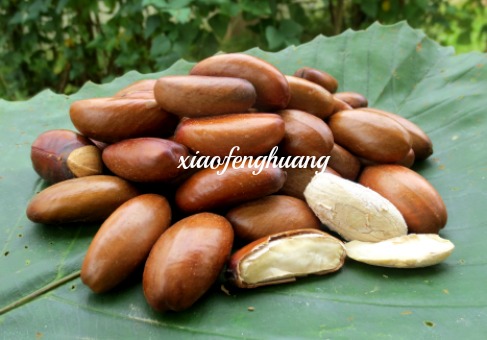There are some strange and rare but very delicious nuts from our rainforest here. One such nut is Kacang Kop(Bidayuh) or Merenti (Iban). In Hakka it is called wild groundnut (山地豆)which is a bit misleading because it does not really taste like one but more like kernel of our wild olive, dabai. Its ID is Ostodes pauciflora Merr.

Strange nuts of Borneo-so wild, so crunchy and so perfectly delicious are those nuts of Borneo jungles that make us wonder whether they are endemic to Borneo. Of course they are not but are found in abundance in this part of the world. The top one in the collage is buah Brati (Bidayu), Buah buantik (Kalimantan), buah merenti (Iban). The shell is so hard that a pestle is needed to crack it open and the kernels inside the nut taste like dabai kernels. The nuts have to be boiled for a few hours with salt. Most vendors in the markets sell boiled nuts.

The outer light green shell of each seed can be easily open to reveal a round, black seed with another hard shell and a white kernel inside which has a nutty flavor. After boiling the seeds for about two or more hours with salt, the kernel can be taken out by pounding the black shell with a wooden pestle. It sounds troublesome, isn’t it? Wait till one has tasted the nutty and tasty kernels inside the seeds, one will never complain of all the hard work done.

The fruits have outer skin or shells that look exotic in shape. From far they look like ping pong balls hanging on the trees. Their fruit size is about the size of a ping pong ball.

Merenti fruits always appear in pairs and they look like pale yellow ping pong balls hanging on the trees. The shell turns greyish in colour when the fruits mature. Fruits have to be harvested at this stage before they drop to the ground.

The picture above shows buah empit aka buah pelajau, praju, peladjau or empelanjau. These are medium sized trees growing along river banks. Very often our natives collect the floating nuts from the upper streams. The spongy, fibrous husk are then separated from the edible cotyledons. Natives around Kuching area like to stir-fry tempoyak and add empit to the dish while local Chinese cook the nuts in soup with meat. It tastes like almond if eaten fresh. As for vegetarian, just boil the nuts for 30 minutes, add rock sugar and soya bean milk. The soup is fragrant and the nuts are super soft. This nut has good export value. Empit is quite commonly sold in markets during end of the year. Its ID is Pentaspadon motleyi Hook.f.

The brown one at the bottom left is buah perah(malay), buah kelampai(Iban), buah rampeh(Bidayuh). Buah kelampai has to be boiled a few times before serving. It tastes more like rubber seeds. Fermented kelampai nuts are popular in Indonesia and it is then made into a kind of paste for cooking, something like buah keluak. To cut short the cooking time, it is best to lightly crush the shell and then proceed with the boiling. Its ID is elateriospermum tapos.

The picture above shows keranji with common names as Velvet tamarind or tamarind plum. Actually keranji is not a nut. It looks like mini bird eggs with a black egg-like shell and a plum-like fruit with thin flesh and a hard pit inside. It is very similar to tamarind in taste which is sweet and sour. Basically there are three types of keranji -Keranji tanjan, keranji madu and keranji papan. Keranji madu is the smallest of length 1.5cm and width 1.2cm. It has sweet and black caramel-like flesh which can be eaten by sucking. The other two keranji fruits have orange flesh. The fruit which is a good survival food in the jungle can be soaked in water to make sour, sweet drink. Keranji fruits can be kept in a tin for a few months by drying the fruits with shell on for a week in the sun. Its ID is Dialium indum L.

Bawang Hutan(Malay) or Sindu(Iban) was use as garlic in the olden days. The whole tree which means its trunk, flowers, leaves and fruits all smell like garlic. Its heavy and hard trunk is a first-class timber with its garlic odor. The leaves and nuts are used for flavoring food. Never eat this nut raw. It has to be cooked to be edible. For Malays, the nuts are used as herbal cure for high blood pressure. There are websites selling this herbal product. Usually natives cook soup with the nuts. Its ID is Scorodocarpus borneensis Becc.
Please like our facebook page, Malaysia vegetarian food for better interaction and further information.
Some of the nuts and other wild vegetables may be shown on our facebook page but not shown here in the blog.
Copyright claim – Do not crop any pictures from malaysiavegetarianfood.com.Do not share our pictures without any watermarked signature on them.Excerpts from our articles to be credited to malaysiavegetarianfood.com.
